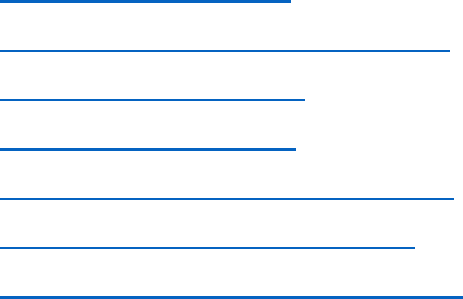
What is multisensory learning?
It involves the use of our senses. Multisensory learning utilizes more than one
sense to enhance the learning process for a student. There are four different
modalities or learning styles: VAKT
Visual- what you see
Auditory- what you hear
Kinesthetic- how you move
Tactile- what you touch
-Multisensory learning is taught incorporating all the senses
into the learning process to activate different parts of the brain
simultaneously, enhancing memory and the learning of written
language.
-It provides more ways for understanding new information,
more ways to remember it and more ways to recall it later.
Who benefits from multisensory learning?
Everyone
We learn with our whole body. We have a multisensory
brain.
We all have different learning styles.

People with sensory integration challenges
Children with sensory integration challenges sense
information normally but have difficulty perceiving and
processing that information because it is analyzed in their
brains in a different way.
Young children
In order for a child to be able to sit still, pay attention, and
visually remember the shapes of letters and numbers, the
child first needs to have developed his or her
proprioceptive system, a sense of the body in space.
(kinesthetic, proprioception)
How effective are multisensory techniques for teaching
reading strategies?
Past research: Here are two very successful approaches to
multisensory strategies that have been around for
decades. Please check out these websites for further
details.
Orton Gilliam Based Approach- A multisensory reading
instruction approach geared for students with disabilities.
https://www.orton-gillingham.com/

Montessori Education- A successful child centered
education program used in early childhood, private and
public schools.
http://amshq.org/Montessori-Education/Introduction-
to-Montessori
Multisensory Learning Types and Activities-
Visual- spatial-
A visual learner learns best by using their eyes to see
information. They learn by seeing words in printed form or by
using graphics and pictures, observing real life, and other visual
aids.
Activities Focused on Visual Learning
Printable Books: Students read short books emphasizing sight
words, word families, and short/ long vowels. Students can
underline with marker the focus words such as all the short ‘a”
words, etc. Students can color, draw, write, and underline in
printable books. Reading becomes more of an active activity
for the students. For great book ideas and these printable
books checkout:
http://www.kindergartenkindergarten.com/books/.
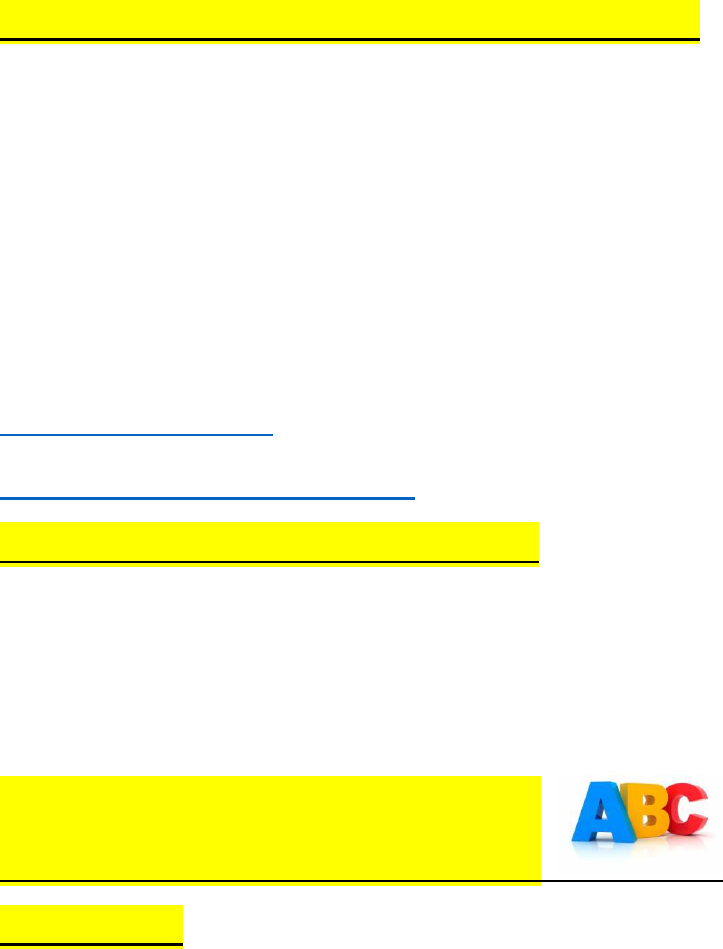
Hidden sight word coloring/sight word mosaic: A sight word
mosaic is an abstract design that is colored by sight word.
Students make squiggles, lines and shapes. Sight words are
written in between the shapes. This activity is similar to color
by number. Students begin to visualize the sight word with
color. This tactile focused activity helps students connect the
word with the colors visually. Here are three websites that
printable sight word coloring sheets can be found.
www.pintrest.com
www.thisreadingmama.com
Flashcards with identifying pictures: Children learn with
repetition and flashcards provide repetition. If children cannot
create or form mental pictures while reading, they are forced to
memorize the words they see (visual). Flashcards with pictures
associated with letters provide a visual cue.
Visual Letter Recognition Strategies:
Letter Sorts: Have your child sort letters by categories. This can
be done on paper or with manipulatives (letters with tails vs. no
tails, circles vs. no circles, dots vs. no dots)
Have your child watch what he/she looks like when saying
letters in the mirror. What letters make an “O” shape of their
mouths? What do their tongues do when they make a “sh” or a
“th” sound? Have your child place his/ her hand on his/ her
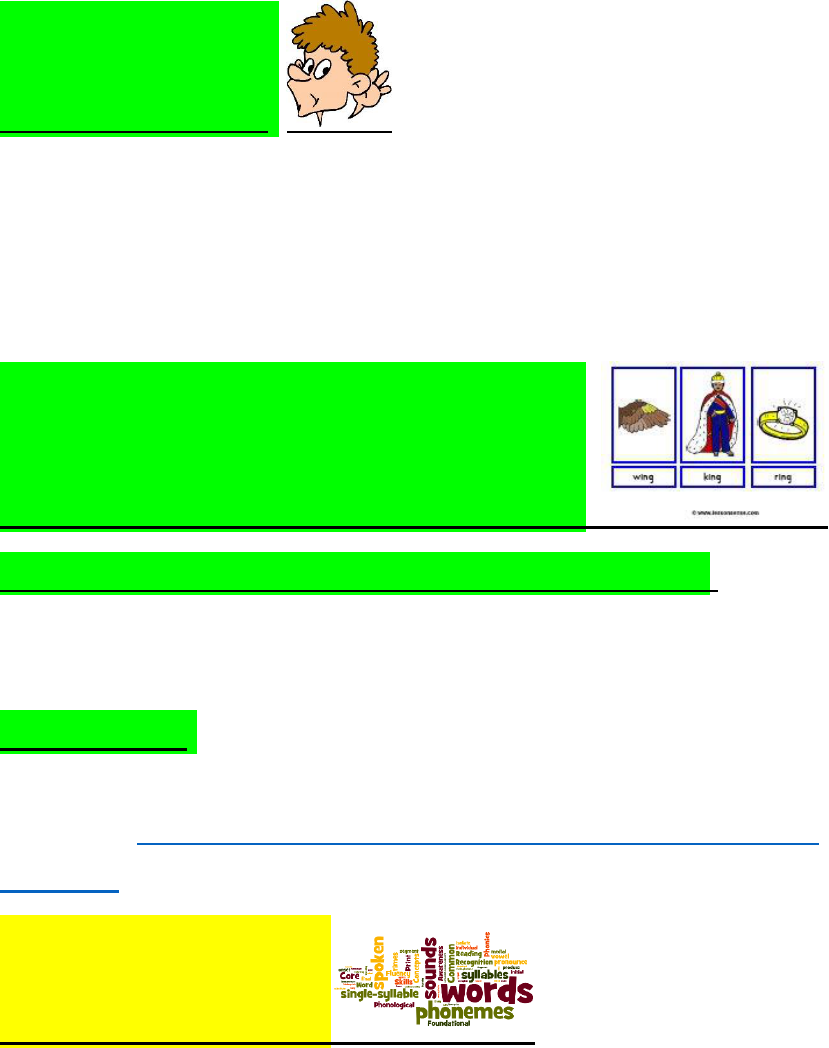
throat when saying / the / and feel the vibration in his/ her
throat.
Auditory Learners-
An auditory learner is someone who learns best by listening
and talking. They learn reading by listening to someone
present information orally and by being allowed to discuss and
ask questions.
Activities focused on Auditory Learning
Rhyming/ making up words with word families: Using a white
board students take a word family sound such as “at” and make
a list of real or silly words (cat, bat, dat, jat)
Read Alouds: Literacy does not depend upon reading text in
books. This cannot be emphasized enough with dyslexic
learners. www.dyslexia-reading-well.com/multisensory-
learning
Phonemic Awareness-
Phonemic Awareness is verbal and auditory, not written, and
prepares children for reading print. Segmenting and blending
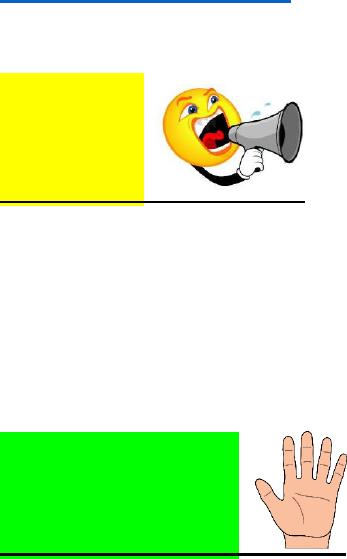
sounds to make words can be played around with in many
ways. Some examples include, bouncing or throwing a ball for
each letter sound, jumping or clapping.
Students can exaggerated sounds to blend sounds
together or for letter sounds. Stretchy bands can be used as a
manipulative tool to stretch out sounds and then blend them
back together. When a child pulls the band back in, the sounds
are said more quickly and clearly make a word. Several more
good examples of ways to work with phonetics can be found at
www.pinterest.com under the category “phonemic awareness
activities.”
Chanting-
This includes chanting a word several times after your child has
learned it. Saying a word three times and saying the word a
little louder each time seems to reinforce the word a little
more.
Tactile learners:
Tactile learners learn best through their sense of touch, such as
using their hands and fingers. They learn best by writing,
drawing, and using hands on manipulatives.

Activities focused on Tactile Learning:
Playdough: A child can create sight words or letters with play
dough. For younger students a play dough mat with letters
already outlined works best. Sight words can be written on a
white board. Students can make the word with playdough and
guess the word. This can also work well with word families (at,
et) or blending letters ( c a t ) as you can manipulate and
change one letter (c a t change the c to a b for the word bat).
You can also physically manipulate play dough to squish sounds
together, separate them or take away a silent letter.
Word building kits: Words can be made with magnetic letters
or scrabble pieces. You can use containers for this activity.
Read it, Write it, Build it: This is a multisensory technique that
works well with tricky word or sight words. Read a word such
as look, build the word with magnetic tiles, and then write the
word with a pencil.
Using Wikki Sticks to build words/ letters: Similar concept as
play dough. Wikki sticks are bendable sticks.
Sandpaper letters: These are tracing letters made of
sandpaper. Children use their finger to trace the letters. The
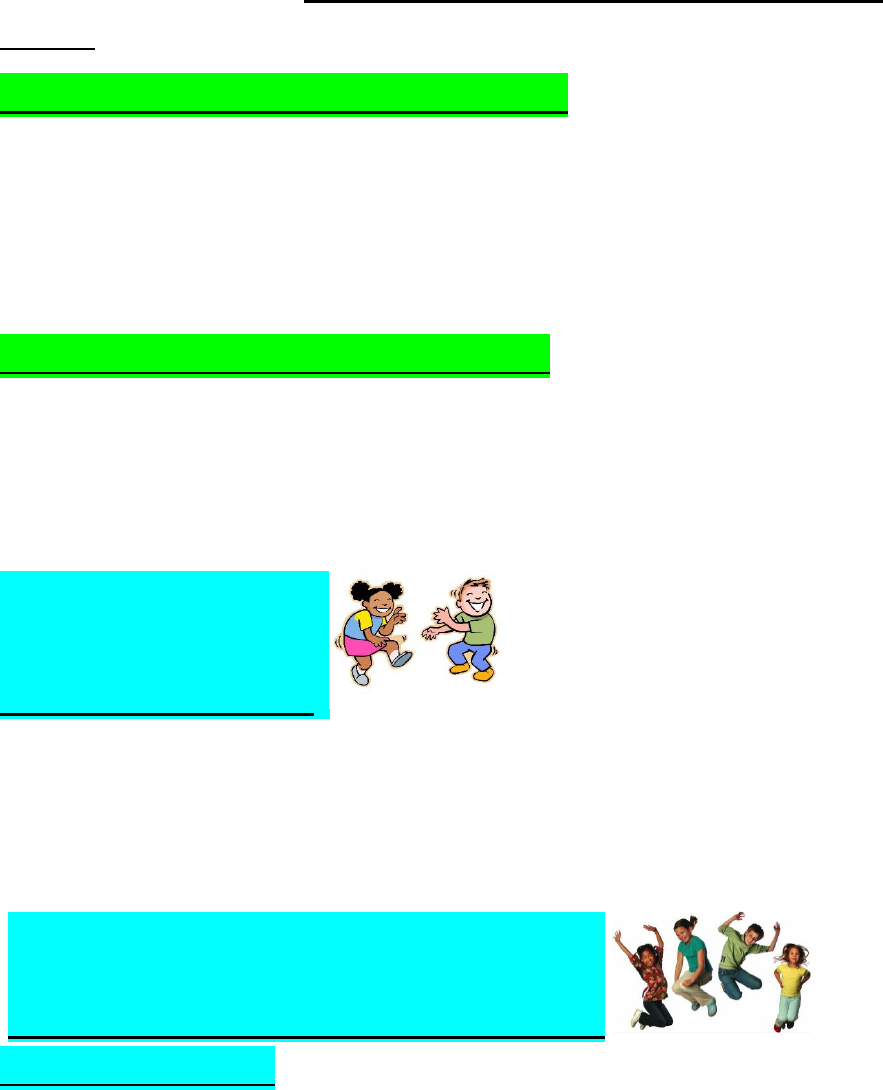
children retain a tactile memory of the feel of the letters. This
is a well- established Montessori technique. Here is a template
to create your own. www.montessorimom.com/sandpaper-
letters
Writing letters and sight words in the:
Sand
Shaving cream
Air
Salt
Hidden sight/ tricky word painting: Write your child’s sight/
tricky words in white crayon on white paper. Children paint
over words with watercolor. As they paint the sight/ tricky
words appear.
Kinesthetic Learners:
Kinesthetic learners learn best through movement of their large
or gross motor muscles. They take in information best while
moving and doing, being involved in projects, role playing,
learning while standing up and engaging in real life activities.
Activities involving Kinesthetic learning:
Sight Word Jump: Write sight/ tricky words on post it notes
and put them high up on a wall. A child jumps for the word

when it is called out. Check out www.pinterest.com for more
jumping ideas.
Race Car Blending: This is a phonemic awareness activity using
a toy car to drive across letters spaced across a racetrack to
make a word. Students sound out the letters as they drive
across it. When a child drives slowly, he/ she sounds out the
letters as he/ she drives across it. When a child zooms by, he/
she says the word clearly, loudly and quickly. Here is a
template available through www.teacherspayteachers.com
Sight Word towers- Write sight words on red solo cups. Ask a
child to read the words on the cup. If your child reads the word
correctly, they can add it to his/ her tower. If your child misses
the word, he/ she has to put the cup to the side.
Letter sound blending puzzles: These are three letter word
segmented puzzles students put together. Each piece is a
separate letter sound. When put together, the word and
corresponding picture are made. Here is a free download to
make this:
www.teacherspayteachers.com/Product/Puzzles-1173760
You can also laminate and add magnets to the back of the
puzzle pieces. Mix up all the puzzle pieces on a magnet board,
have the students put them all together and read the words.

http://moffattgirls.blogspot.com/2014/01/ready2read-level1-
unit-1 again.html
Activities involving taste and smell:
Taste- Use alphabet cheese to spell words in place of letters. If
your child can read the words correctly, he/ she can eat the
word.
Find foods that start with a particular letter of the alphabet that
you’re working on. For example: p is for pineapple, pumpkins,
pepperoni pizza or pancakes.
Smell
Write letters with a mixer of glue and dry jello mix.
Find smells that start with particular letters of the alphabet
Activities involving proprioception:

Proprioception
is about knowing where your body is in space and knowing how
to get around your environment safely. The proprioceptive
system is developed and strengthened in children by having
them do large and small physical movements, especially
movements where they experience pressure, using their
fingers, hands, arms, trunks, legs, and feet. Any activity that
helps children move in this way is incorporating this sense.
Proprioception has to do with spatial orientation. Some
children have difficulties imprinting and remembering the
correct spatial orientations of letters and numbers. The letters
b, d, p, and g are especially difficult. When young students are
allowed to move, fidget, and even sometimes fall off their
chairs, we are allowing them to become more aware of their
own bodies.
Some children respond to one learning style over another.
This does not mean that many of the activities in the various
learning styles cannot be helpful for your child. We as humans
have multisensory brains. Pay attention to what your child is
telling you verbally and nonverbally. Let your child take the
lead and have fun with learning reading through the various
modalities.

